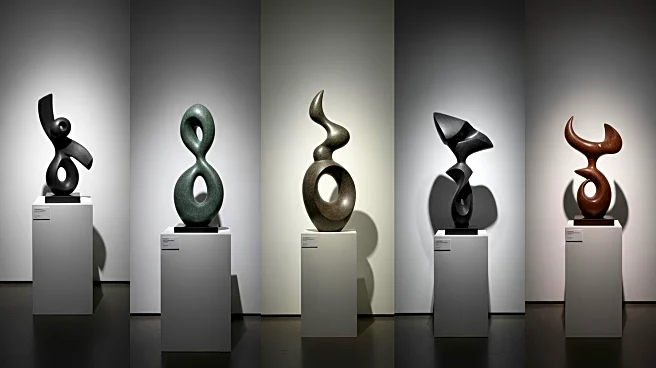What's Happening?
Robert Grosvenor, a sculptor renowned for his innovative and gravity-defying art, passed away on September 3 at his home in East Patchogue, New York. He was 88 years old. Grosvenor's work often involved transforming familiar objects, such as boats and vintage cars, into enigmatic sculptures that challenged conventional perceptions of gravity. His artistic journey began in the early 1960s when he was part of a group of avant-garde artists who established a gallery co-op called Park Place in Manhattan. This group, which included notable artists like Mark di Suvero and Dean Fleming, operated in a derelict building in the financial district, creating art that was far removed from mainstream trends. Grosvenor's first major piece, exhibited at Park Place in 1965, was a large structure made of plywood and Masonite, painted silver and bright yellow, inspired by a solar telescope he had seen in Arizona.
Why It's Important?
Robert Grosvenor's contributions to the art world were significant, as he pushed the boundaries of sculpture and challenged traditional artistic norms. His work not only influenced his contemporaries but also paved the way for future generations of artists to explore unconventional materials and forms. Grosvenor's sculptures, which often defied gravity, invited viewers to reconsider their perceptions of space and form, making his art both intriguing and thought-provoking. His legacy is one of innovation and creativity, inspiring artists to think beyond conventional limits and explore new possibilities in their work.
What's Next?
The art community is likely to reflect on Grosvenor's impact and contributions, potentially leading to retrospectives or exhibitions celebrating his work. Galleries and museums may seek to showcase his sculptures, highlighting his unique approach to art and his influence on contemporary sculpture. Additionally, his passing may prompt discussions about the evolution of sculpture and the role of avant-garde artists in shaping modern art movements.
Beyond the Headlines
Grosvenor's work raises questions about the relationship between art and physics, as his sculptures often seemed to defy the laws of gravity. This intersection of art and science invites deeper exploration into how artists can manipulate physical properties to create new visual experiences. Furthermore, Grosvenor's approach to using everyday objects in his art challenges cultural perceptions of these items, encouraging viewers to see them in a new light.













